Our beloved pets are important parts of our families. Witnessing our pets age, or having to face a terminal illness can be one of the most challenging aspects of being pet owners. In such situations, hospice and palliative care can provide comfort, support, and peace of mind. Misconceptions about these crucial services abound and can cause pet families to hesitate to schedule consultations with hospice and palliative care providers. In this blog post, we aim to dispel common myths surrounding hospice and palliative care for animals, shedding light on the compassionate and invaluable role these services play in ensuring our pets receive the care they deserve in their final months, weeks, or even days.
Written by Dr. Tyler Carmack, Caring Pathways Director of Hospice & Palliative Care
Myth 1: Hospice Is “Giving Up”
One prevalent misconception is that entering hospice care signifies the family is “giving up” on their pet. However, hospice is far from abandoning our beloved companions or accepting that nothing can be done for them. Instead, it focuses on enhancing the pet’s quality of life during the final stages of illness or old age. Hospice care aims to manage pain, alleviate disease symptoms, anxiety, and discomfort, and provide emotional support to both pets and their owners. By acknowledging that pet loss is inevitable, pet owners can ensure their furry friends experience a peaceful transition surrounded by love. Hospice empowers pet families to be actively involved in their pet’s journey, offering emotional support and making caretaking decisions that align with the pet’s, and family’s best interests.
Myth 2: Hospice Means You Are Just Waiting For Them To Pass
Another common misconception is that hospice care is a passive process that involves “riding out” current medications or treatment plans and simply waiting for it to be time for euthanasia or death. In reality, hospice and palliative care for animals involves a proactive approach to managing pain, discomfort, and symptoms associated with their illness(es). While your pet’s current management plan may have been working for a while, frequent reassessment of pain and quality of life can help ensure continued comfort as conditions advance.
Veterinarians and hospice care teams work together to create personalized care plans that address the unique needs of each pet. Hospice care can involve a range of interventions aimed at ensuring the pet’s well-being. The goal is to enhance the pet’s quality of life, allowing them to continue engaging in activities they enjoy for as long as possible. Pet families actively participate in this process, working collaboratively with the veterinary team to make informed, ongoing decisions about their pet’s care.
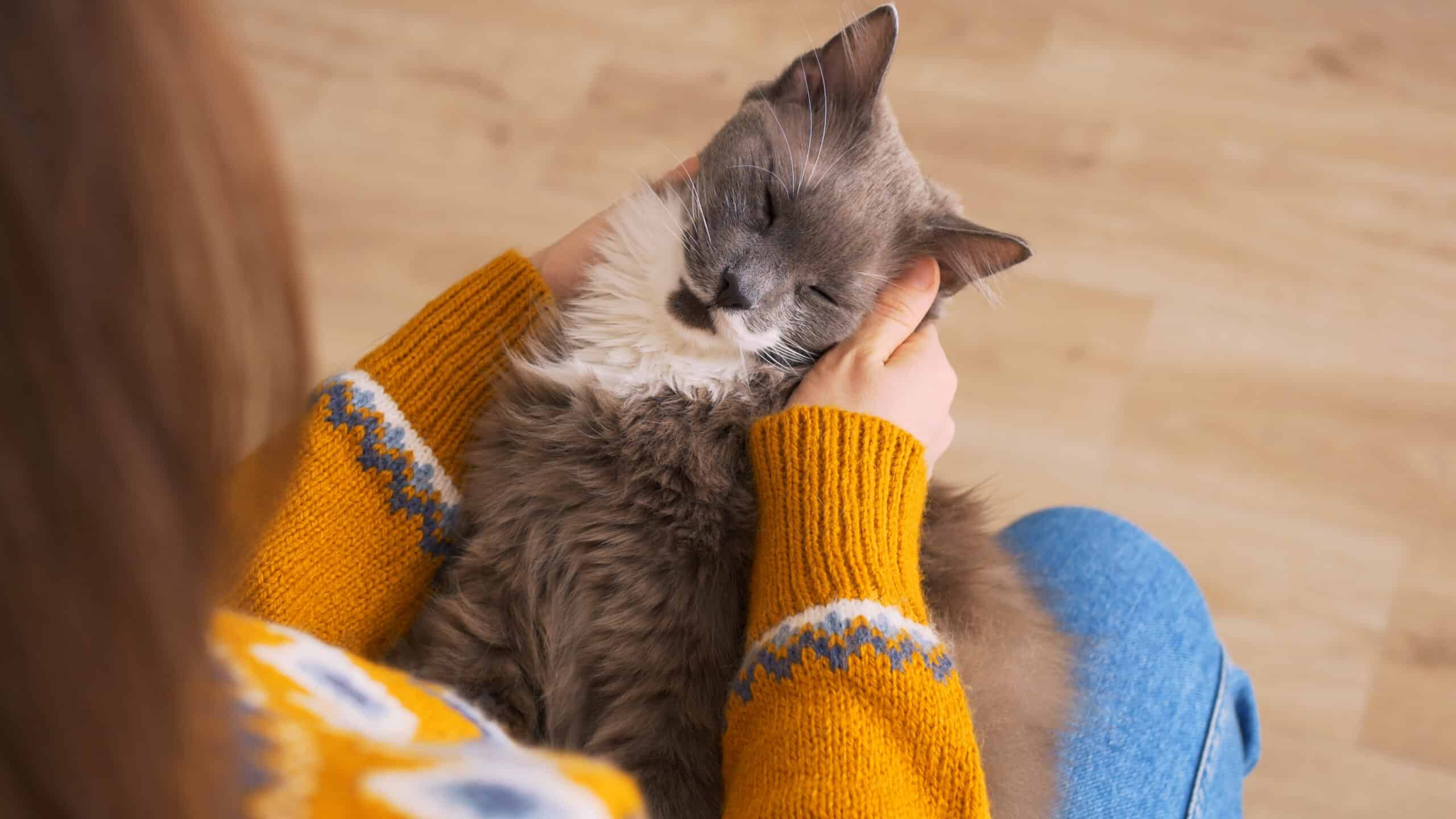
Myth 3: Hospice Means You Cannot Pursue or Continue Treatments
Some pet owners mistakenly believe that choosing hospice care means forgoing any further medical treatments for their pets. However, hospice and palliative care are not mutually exclusive from medical interventions. Veterinarians may still recommend and administer treatments that alleviate pain and improve the pet’s comfort. Referred to as “concurrent care” in human medicine, our animal patients can continue to receive advanced treatments, such as chemotherapy or radiation, while also working with hospice and palliative care teams to mitigate side effects and focus on comfort. Doing so can allow for a continuation of care if and when advanced treatments are no longer indicated or tolerated.
Hospice care is about finding a balance between medical treatments and compassionate care. While aggressive curative treatments are not your hospice team’s focus, symptom management, pain relief, and maintaining your pet’s overall well-being are paramount. Integrating appropriate medical interventions with hospice care ensures that pets receive comprehensive support tailored to their specific needs and stage of the disease(s).
Myth 4: Pets Leave Home to Live at a Hospice Center
One of the most heartbreaking myths surrounding hospice care for pets is the belief that they will be taken away from their loving homes. In reality, hospice care emphasizes the importance of keeping pets in familiar and comfortable surroundings with the people who love them. Many hospice care programs for pets are designed to be provided in the pet’s home environment via house calls. This allows them to remain in a familiar setting, reducing stress and anxiety.
Hospice care teams often work closely with pet owners as guides for creating a supportive and comfortable environment for the pet’s final days. Some rescue organizations will offer this type of care, but this is more tailored to pets without a family and those unable to provide the in-home caretaking needs of the pet.
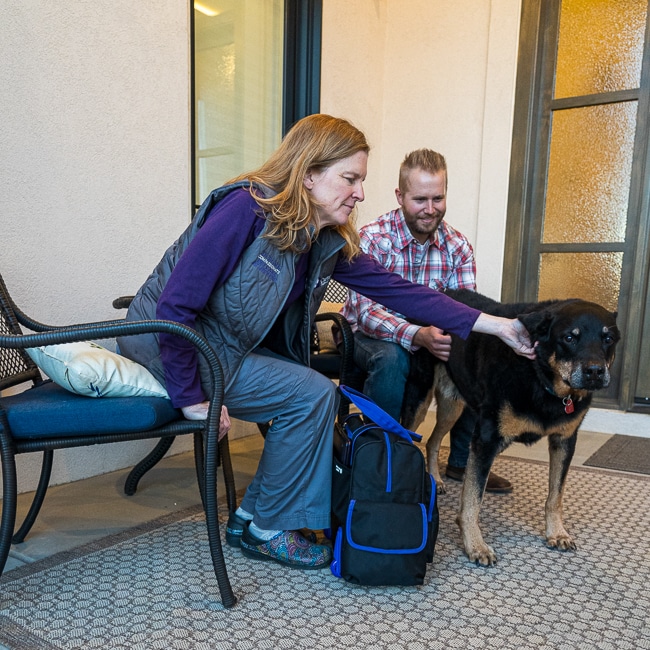
Myth 5: Human Hospice and Pet Hospice Operates the Same Way
Human hospice and pet hospice fundamentally have a lot in common as philosophies of care but also differ in significant practical ways.
- Insurance companies have defined human hospice as care provided to people with less than a 6-month prognosis to live. For many reasons, people are often not referred to hospice programs until their disease is significantly advanced and death seems imminent. In fact, despite the high satisfaction reported by the families of hospice enrollees, 35% of all human hospice patients die within 7 days of enrollment. (1) In veterinary medicine, we are not limited to such a definition and can begin to offer hospice and palliative care at any point in a disease process, leading to a positive impact on our pet’s quality of life. We do see the same trend in that cases are often referred to us or families call us when death seems imminent or suffering becomes obvious. The sooner we begin focused comfort care, the better chance we have at giving our pets some extra good days. (See Myth #8)
- The primary caretakers for pets undergoing hospice care are their families. Most veterinary hospice programs teach families how to give medications, treatments, and general nursing care that would require a nurse/OT/PT/aide visit for a person receiving hospice care. Human hospice often involves coordinating many different providers coming into the home for various treatments and assessments. In animal hospice, pet parents generally work together with a smaller, dedicated team. Followup visits and nursing visits can be defined based on a pet’s unique needs, but generally are far less frequent than visits for a person receiving hospice care.
Myth 6: Hospice for Pets Is Expensive
A prevalent myth surrounding hospice and palliative care for pets is the belief that these services come with a hefty price tag. Hospice for pets is comparable in cost to care in a traditional veterinary hospital. Sometimes because the focus of care has shifted to comfort, hospice care can be even less expensive than traditional care because we are not as reliant on diagnostics and testing. Most pet insurance companies also cover the cost of veterinary care related to hospice consultations and treatments, including the final euthanasia procedure when the time comes. While it’s true that specialized care can incur costs, assuming hospice care is prohibitively expensive might dissuade pet owners from exploring these valuable services for their furry friends. In reality, there are various hospice care options available, catering to different budgets and needs. What’s more, many veterinary hospice care providers offer flexible payment plans through Scratchpay, Care Credit, or other financing platforms.
One of the core discussions hospice and palliative care providers have with families helps the team to outline the family’s caregiving budgets (time, financial, emotional, and physical). We consider the time available to care for the pet, the financial budget, the support system and emotional capacity of the family for caregiving, and the physical abilities of the family. Each scenario is different and being open and honest with your veterinary team will allow a personalized care plan for your pet that fits within your family’s 4 caretaking budgets.
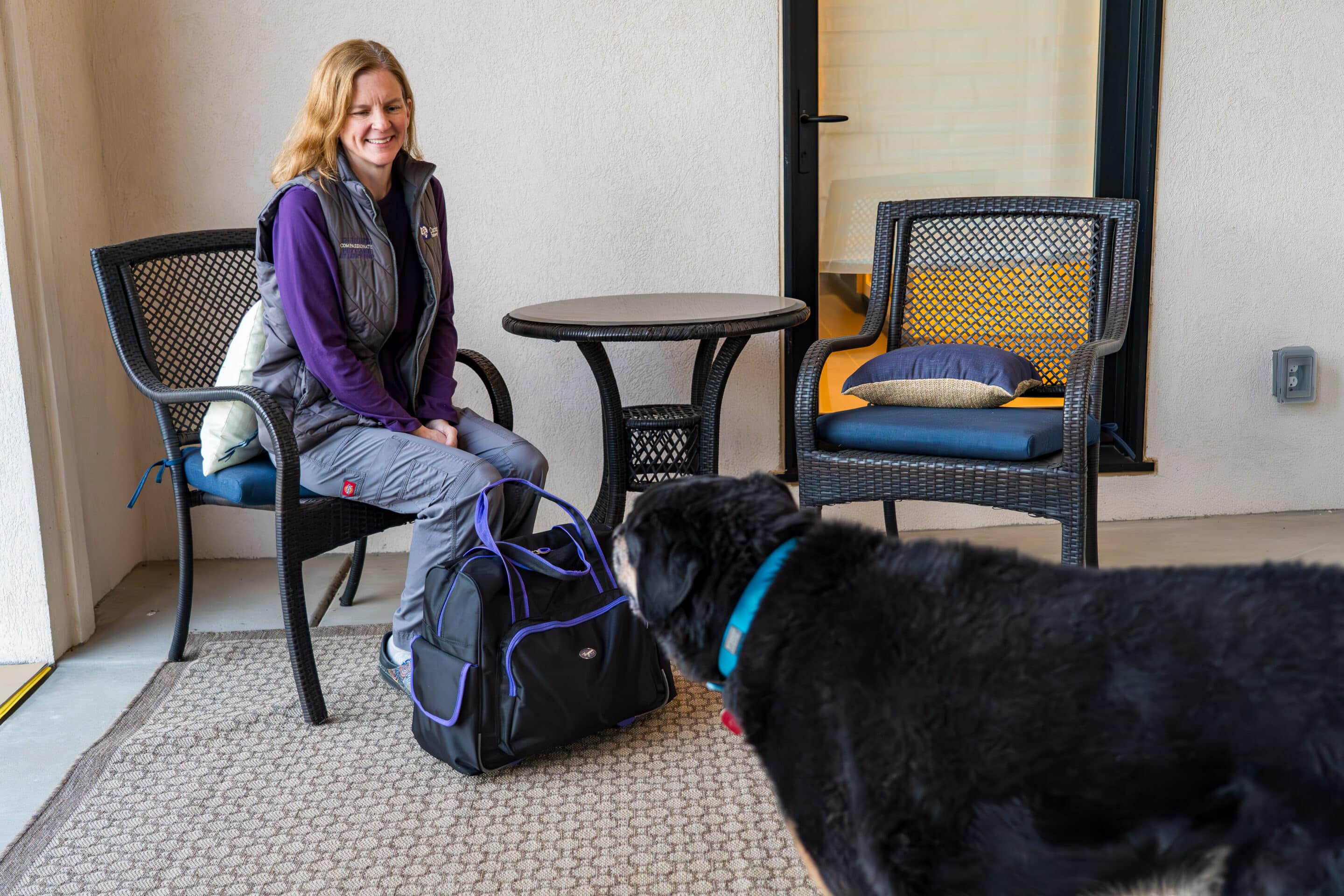
Myth 7: Hospice Means Removing Treatments and Doing Less For Your Pet
A common misconception is that hospice care involves the removal of treatments from a pet’s plan, contributing to the belief that it is a passive approach to care. Hospice care does not exclude medical treatments; rather, it focuses on tailoring interventions to the individual needs of each pet. For some pets, this may involve modifying or removing current treatments and adjusting or adding others.
While aggressive treatments aimed at curing the underlying disease are not the primary focus, hospice care often involves incorporating treatments that enhance the pet’s comfort and well-being. Again, the emphasis is placed on maintaining a balance between medical interventions and comfort care. Nursing care needs also tend to become more complicated as patients become less independent. The hospice and palliative care team can help identify environmental modifications, physical exercises, and/or mental stimulation activities that can improve your pet’s quality of life.
Myth 8: Hospice Prolongs Pain and Suffering
A concerning myth is a belief that hospice care prolongs pain and suffering for pets. Some may worry that choosing hospice means subjecting their beloved companions to unnecessary discomfort to delay the need to euthanize their pet. In reality, the opposite is true! Hospice and palliative care are founded on the principle of prioritizing the pet’s quality of life. The goal is to manage symptoms effectively, alleviate pain, and provide emotional support, all while allowing the pet to maintain their dignity. Hospice care does not seek to prolong suffering but rather to ensure that pets experience their final days with comfort and are surrounded by the love of their families. Ironically, while we don’t have studies available yet in veterinary medicine, I suspect we would see a similar trend as in human medicine- patients who enter hospice care lived an average of 29 days longer than those who were not receiving hospice services and hospice patients were happier, more mobile, in less pain, and lived nearly three months longer than those not in hospice programs. (2, 3)
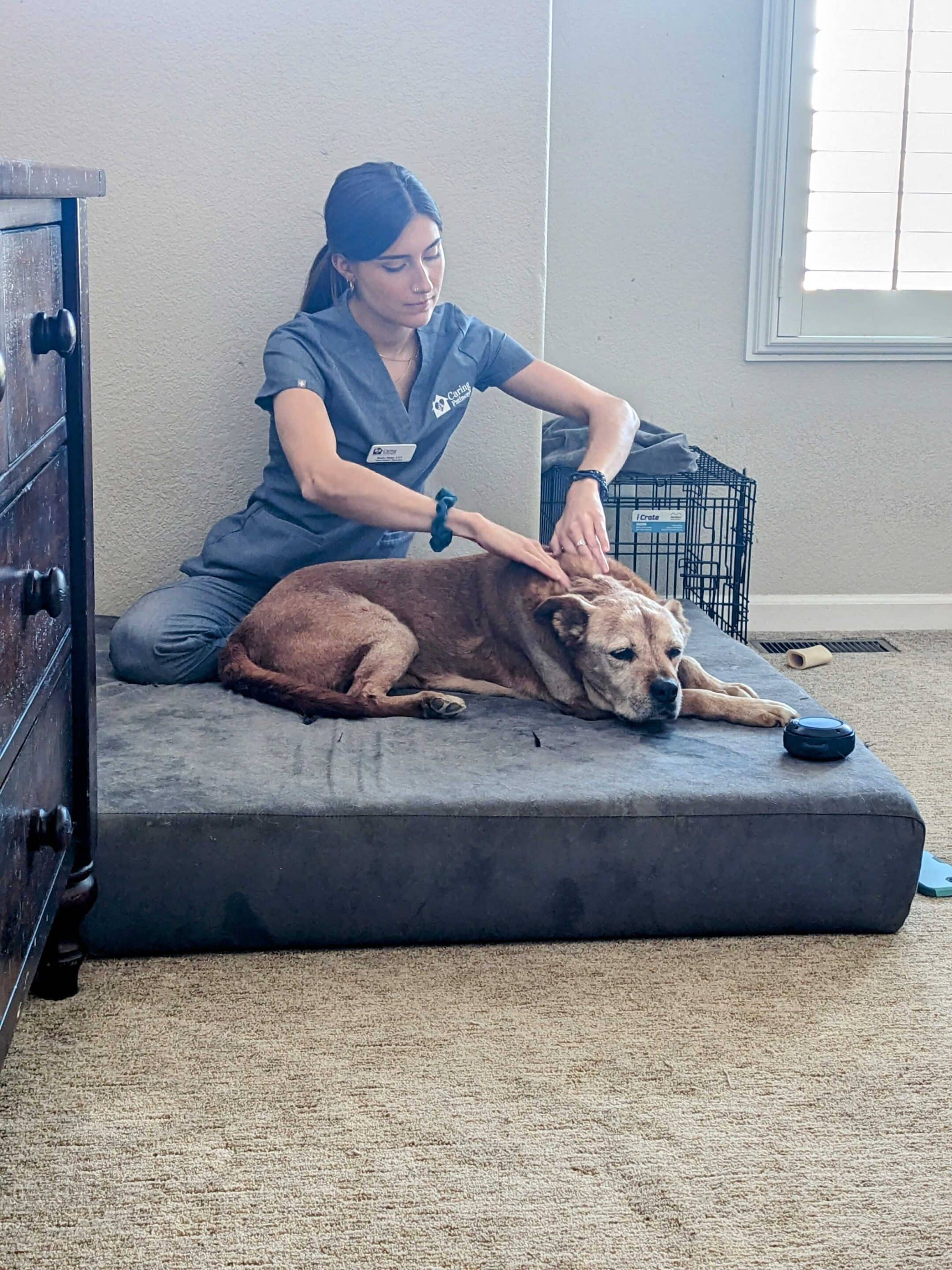
Myth 9: My Pet Needs a Terminal Diagnosis to Qualify for Hospice and Palliative Care
Pets do not need a terminal diagnosis to enter hospice and palliative care. As senior pets begin to develop a level of frailty necessitating more and more assistance with their activities of daily life, they also qualify for hospice and palliative care services. We commonly we assist families whose pets have significant osteoarthritis, cognitive dysfunction, loss of muscle tone and strength, and other aging changes that create challenges to their comfort and overall quality of life.
They may also have one (or several) chronic diseases that remain stable for a long period before advancing and impacting quality of life. Furthermore, pets can “graduate” from hospice care if enough improvement is noted and the decision regarding definitive diagnostics and/or more advanced treatments changes. It is also important to note that palliative care can be provided to any patient, regardless of life stage. All hospice involves palliative care, but palliative care does not have to mean hospice!
Myth 10: My Family Veterinarian Can Provide Hospice Care for My Pet
You caught us! This one isn’t a myth. General practice veterinarians are well-trained in pain management and symptomatic care for pets. However, just like all veterinarians are trained in surgery, some truly enjoy mastering their surgical skills, while others choose not to perform surgery at all and enjoy other specialized areas within veterinary medicine.
When they find their passion within veterinary medicine, veterinarians and veterinary team members often invest a significant amount of their time (and money) into learning even more about their specialized area of interest. While veterinary hospice care is not a recognized veterinary specialty (yet!), there are several advanced training programs available.
In many areas of the country, families have access to care from Certified Hospice and Palliative Care Veterinarians (CHPV) and Certified Hospice and Palliative Care Veterinary Technicians (CHPT) who have completed a rigorous training program available through the International Association for Animal Hospice and Palliative Care (IAAHPC). Look for this credential in practices focusing on end-of-life care to find those veterinarians who have found their passion working with families to provide the very best hospice care for their pets.
Nationwide, pet families can also discuss their pet’s end-of-life care with hospice and palliative care experts via virtual consultations at www.CaringConversations.pet.
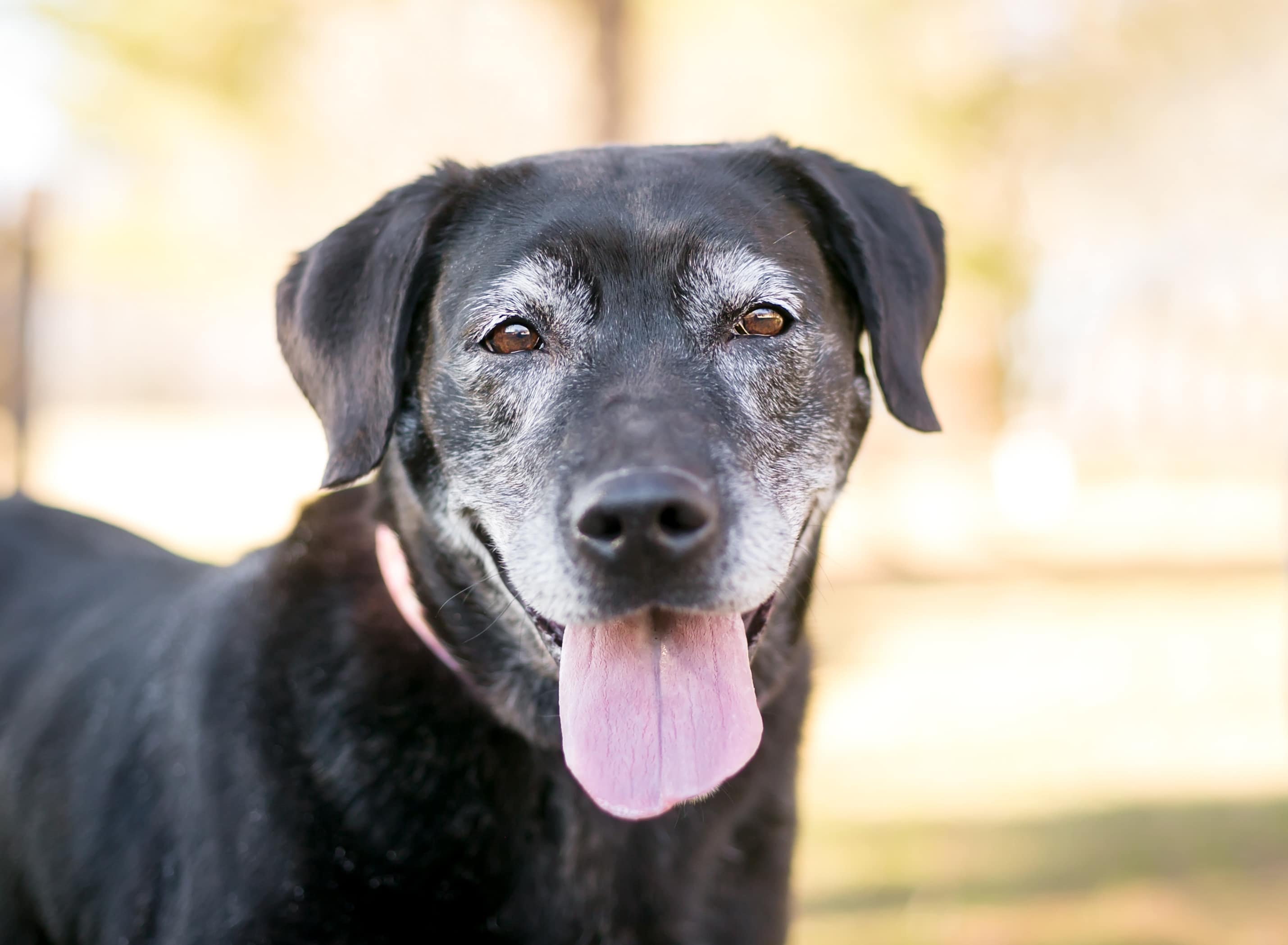
In Closing
Choosing hospice and palliative care for our pets is a compassionate decision that emphasizes their well-being and dignity in their final days. By dispelling these myths, hopefully, pet owners can make informed choices that prioritize the comfort and quality of life for their furry companions. Hospice care isn’t about giving up or doing nothing – it’s about providing love, support, and personalized care to ensure our pets experience a peaceful and dignified transition into death.
- Borowske D. Straddling the fence: ICU nurses advocating for hospice care. Crit Care Nurs Clin North Am. 2012 Mar;24(1):105-16.
- Connor SR, Pyenson B, Fitch K, Spence C, Iwasaki K. Comparing hospice and nonhospice patient survival among patients who die within a three-year window. J Pain Symptom Management. 2007 Mar;33(3):238-46.
- Temel, J. S. et al. Early palliative care for patients with metastatic non-small-cell lung cancer. N. Engl. J. Med. 363, 733–742 (2010).
About the Author: Dr. Tyler Carmack
Dr. Tyler is the Director of Hospice and Palliative Care for Caring Pathways. She founded Hampton Roads Veterinary Hospice in 2011 and has practiced exclusively hospice and palliative care for over a decade.
She has served on the Board of Directors of the International Association for Animal Hospice and Palliative Care (IAAHPC) since 2016 in a variety of roles and often lectures about Veterinary Hospice and Palliative Care. Dr. Tyler currently holds certifications in animal hospice and palliative care, veterinary acupuncture, Chinese food therapy, and Traditional Chinese Veterinary Medicine End-of-Life care. Her professional interests include pain management and teaching.

